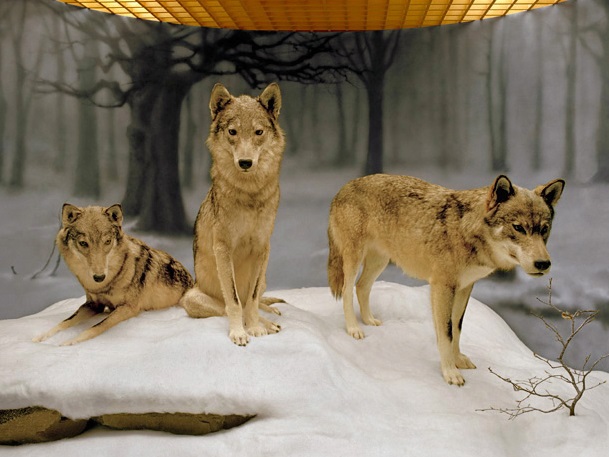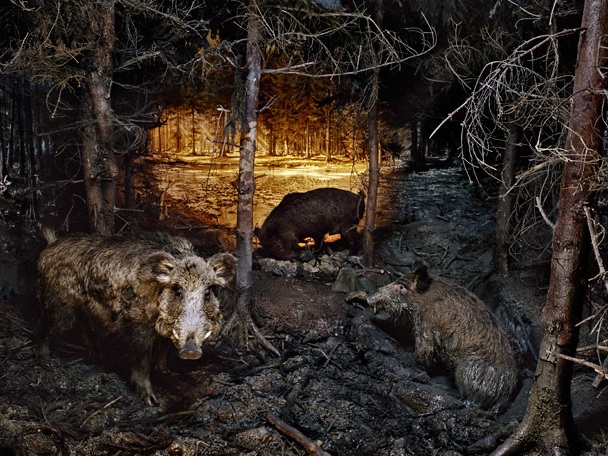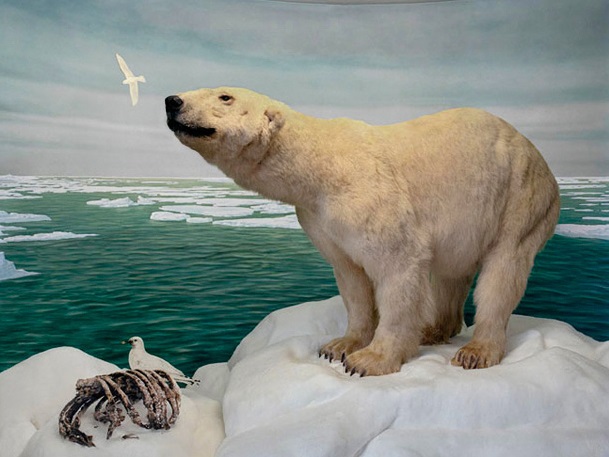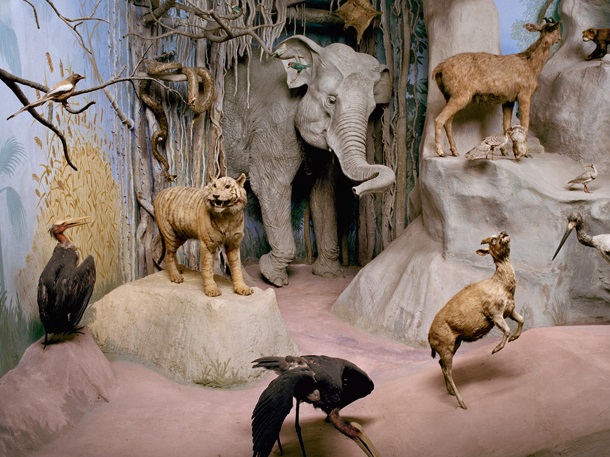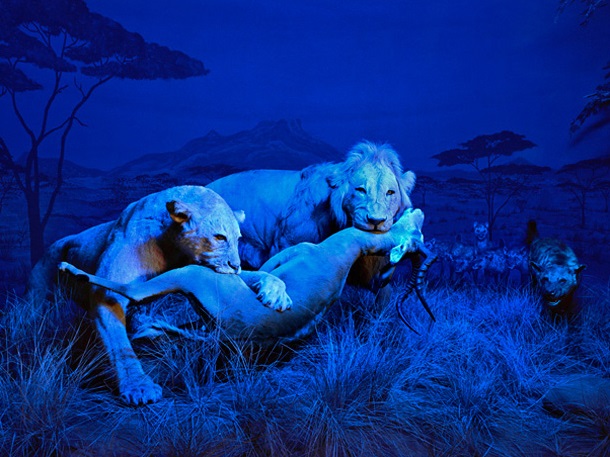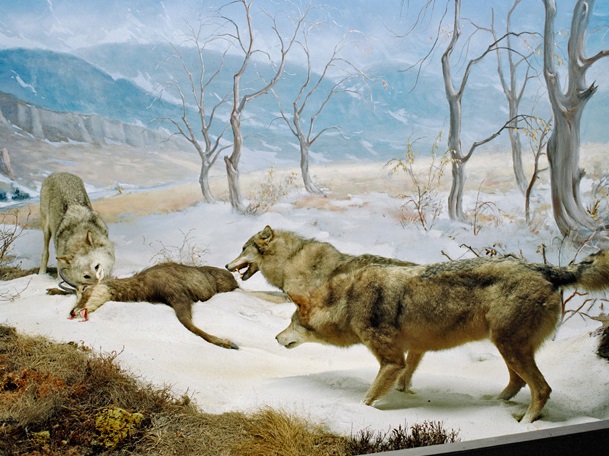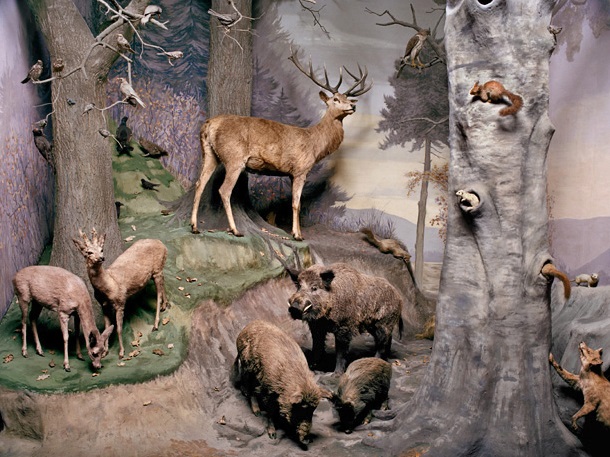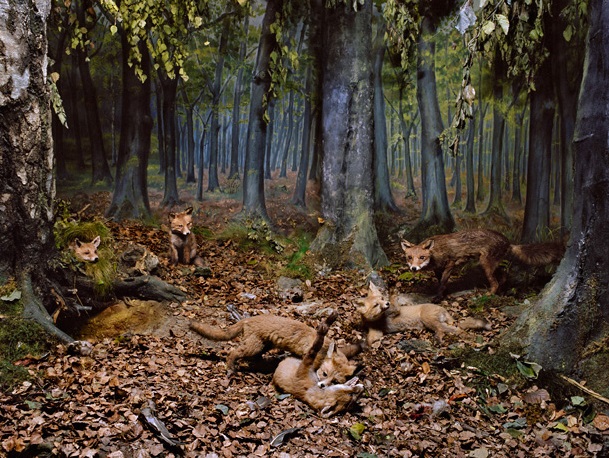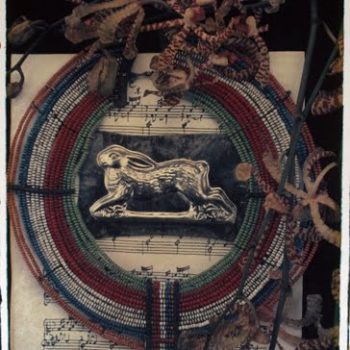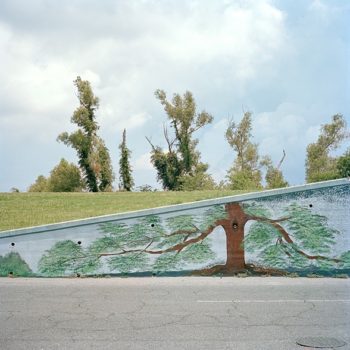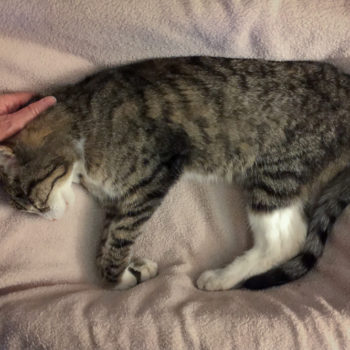In the diorama as well as in photography, movements are captured for eternity. I think it’s this statement that causes photographs of natural history museum dioramas to forever gain my attention. You could tattoo it on my body. And seeing a series of this subject matter for the first time always arouses in me the same restless thoughts. One being the conflict I feel regarding the “original” artist in the case (is it the taxidermist? The person who created the diorama? The photographer? Is the taxidermy or the diorama or the photograph even art?), another being whether it is truly the photograph I am interested in or just the image of a natural history museum I have never been to before (there are all in Germany).
But along with these arguments, I often come to a new conclusion regarding other issues with each time I see a series that’s new to me. I love how some of these photographs are made from a point of view that just barely shows evidence that the setting is a museum diorama, and how some are from a point of view that makes them appear flat, as paintings (the wolves image below is a good example of both of these). The moment I saw the foxes image on Tumblr, I immediately began compiling this post.
From the artist’s statement: In the diorama as well as in photography, movements are captured for eternity. They can so forever be viewed in “real time.” Henri Cartier-Bresson however said that “photographers deal with subjects continually on the verge of disappearing.” My photographs simulate a simulation instead of reconstructing life, which is their actual task.
Today many of the old dioramas fall prey to modernization and the actual sites of nature disappear. Therefore, some of these photographs have become testimonies of an era, of a real and limited nature. In the context of my serial work, similarities and differences, standards and abnormalities form new categories.
From “Habitat Diorama”
Visit artist's site: stephansasek.de
Posted September 19th, 2013

